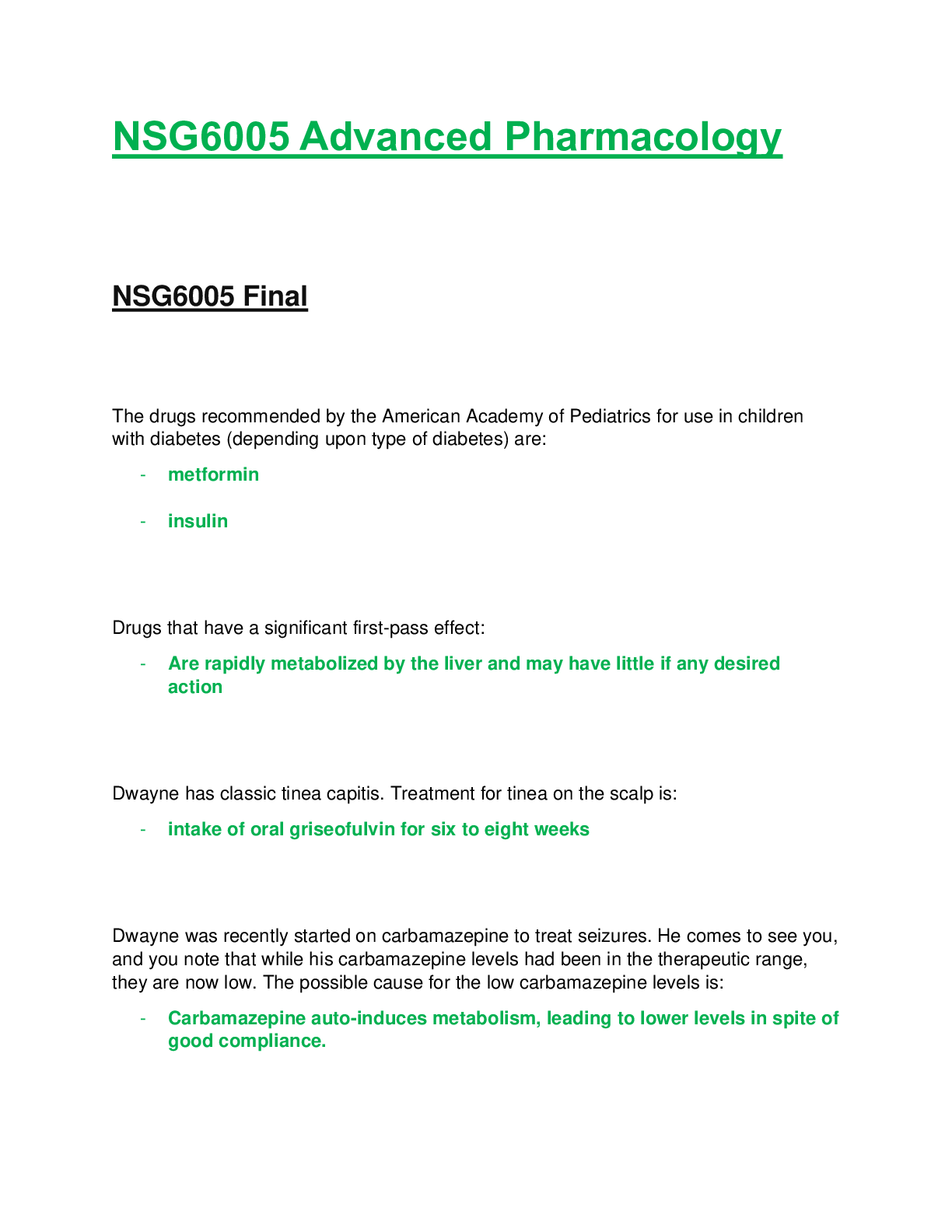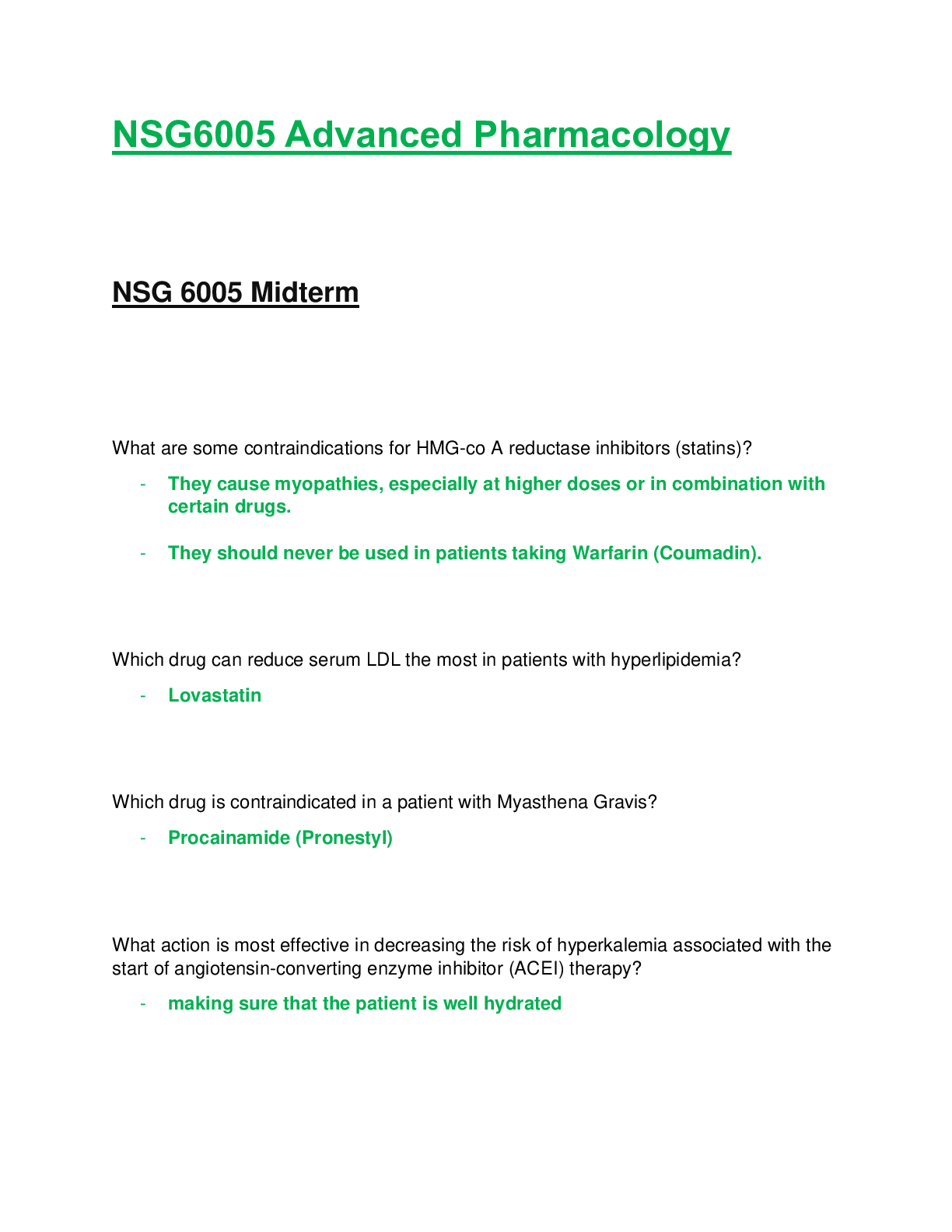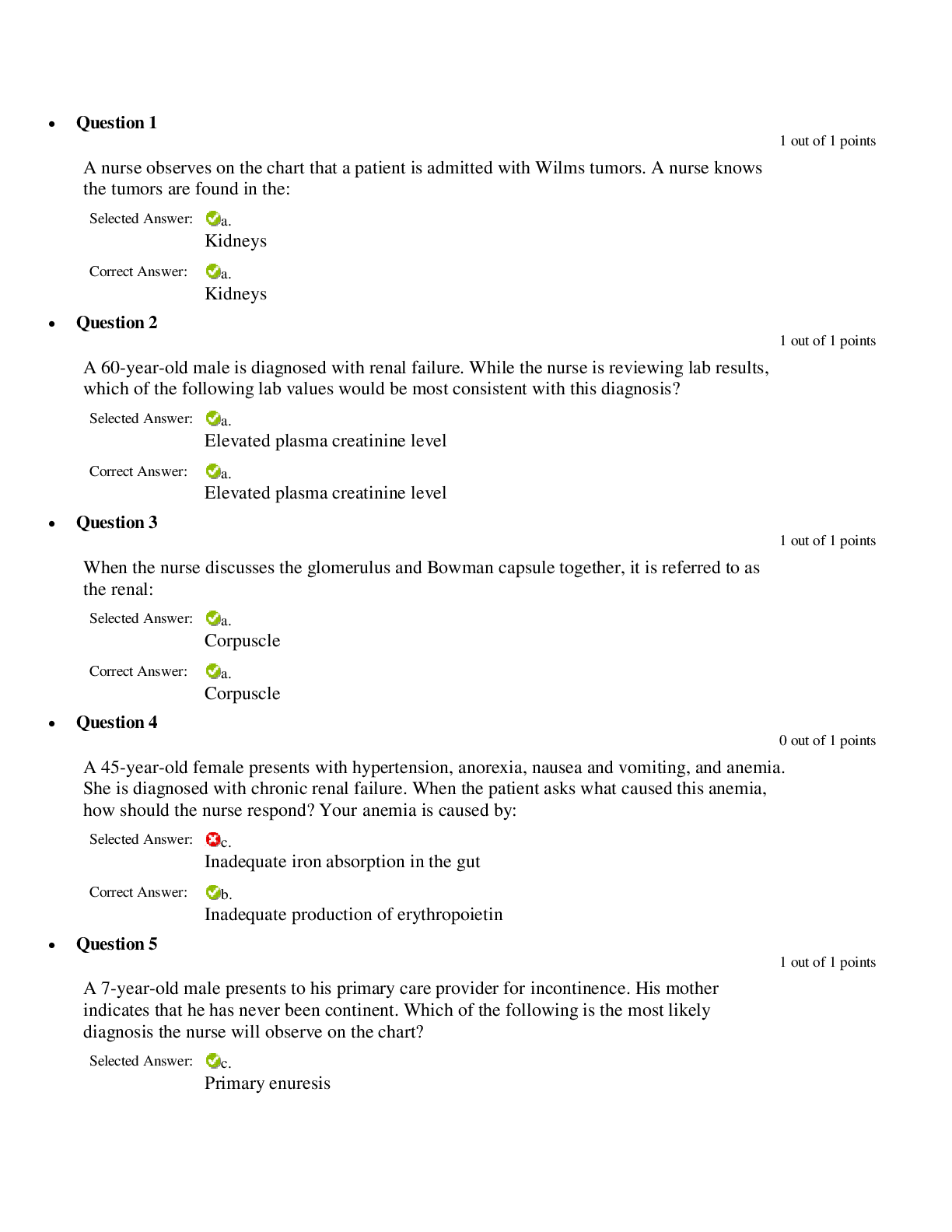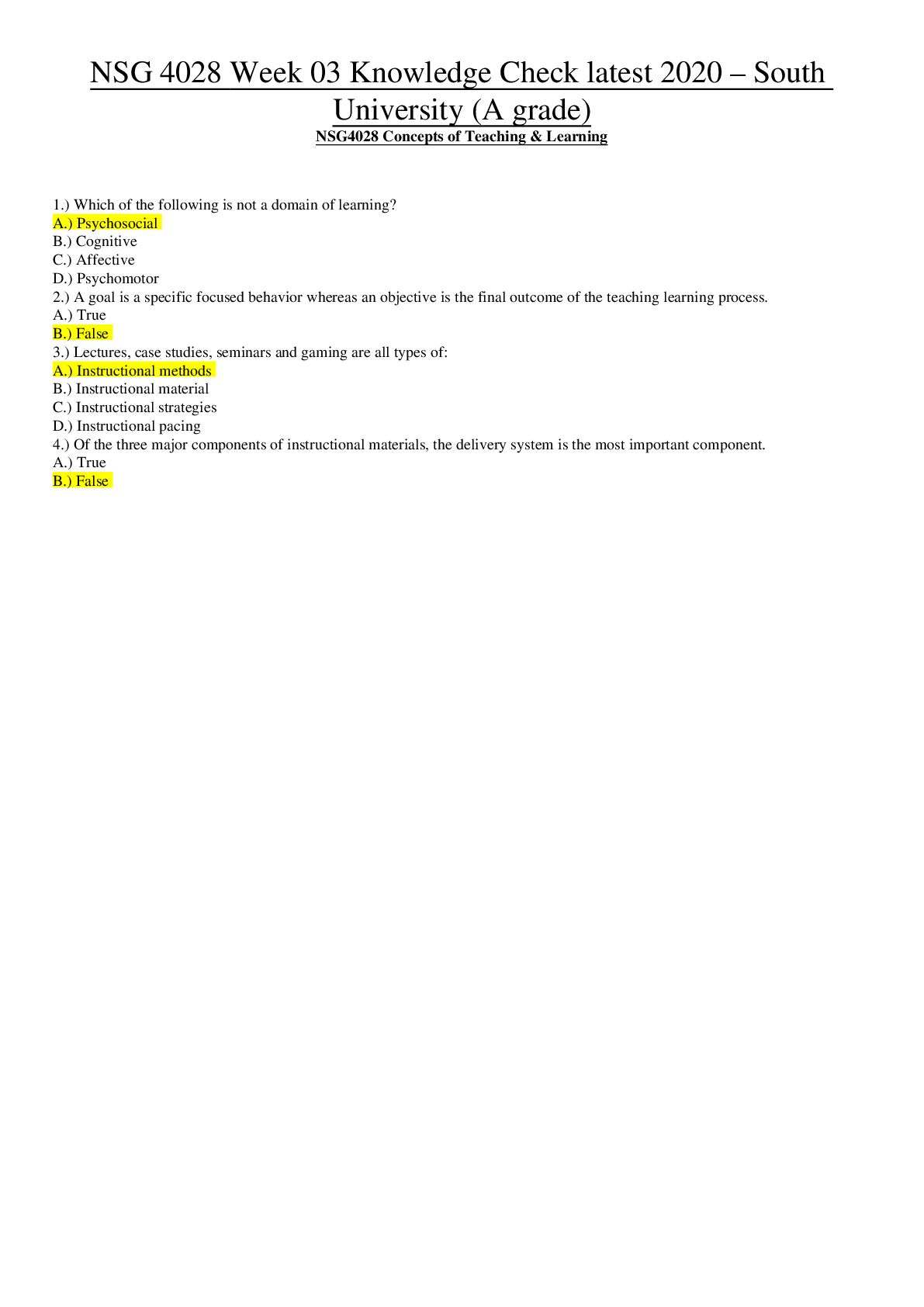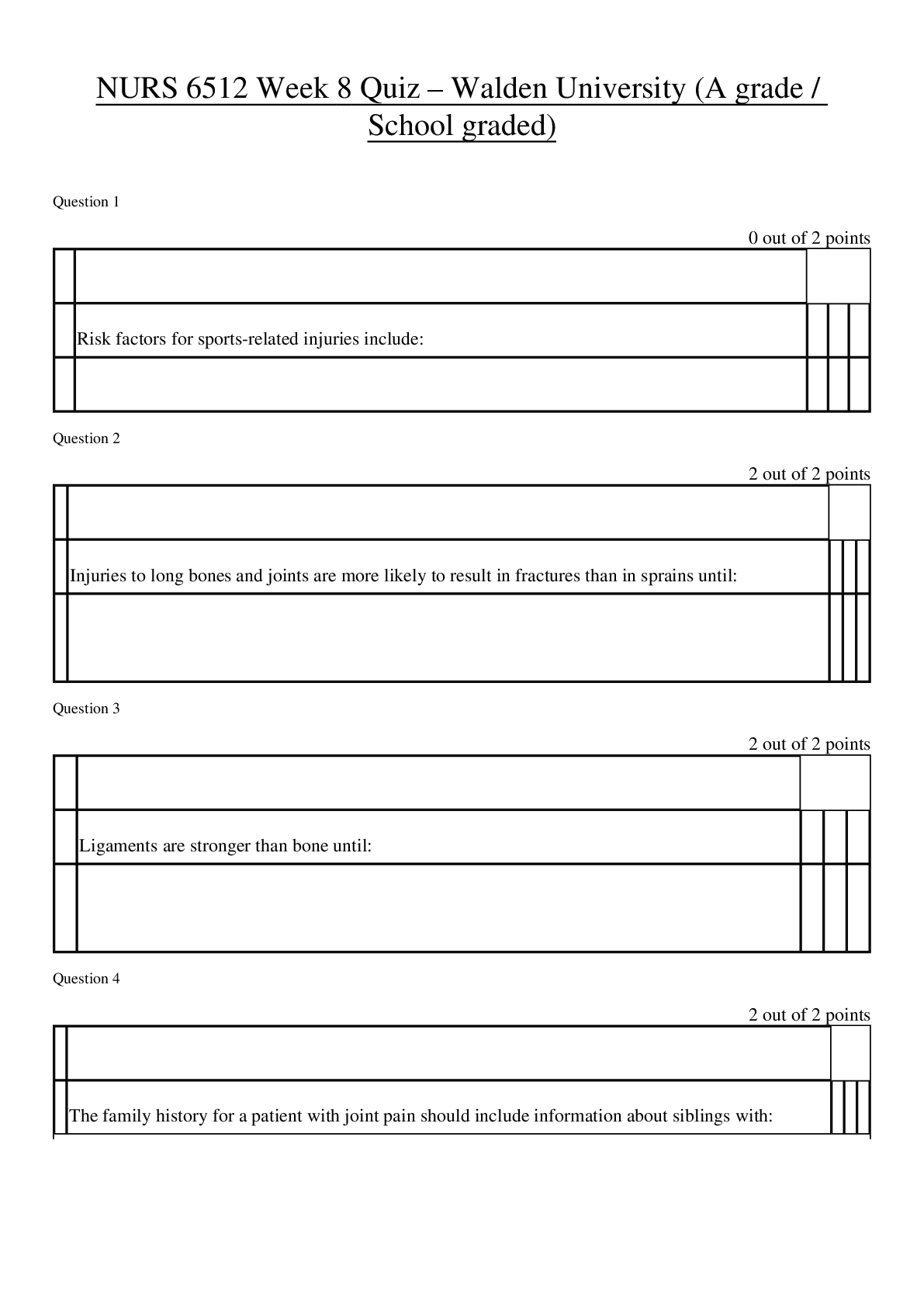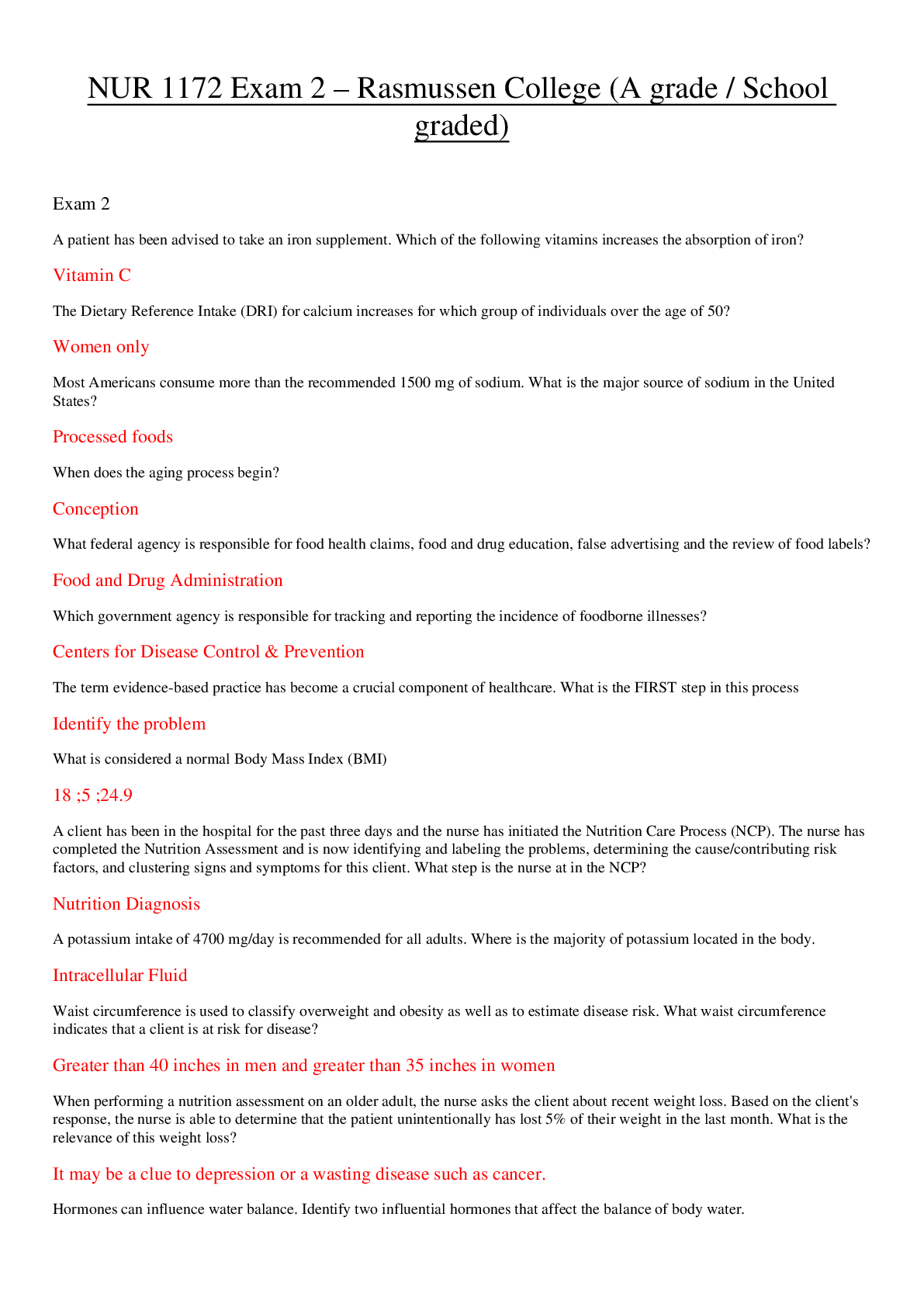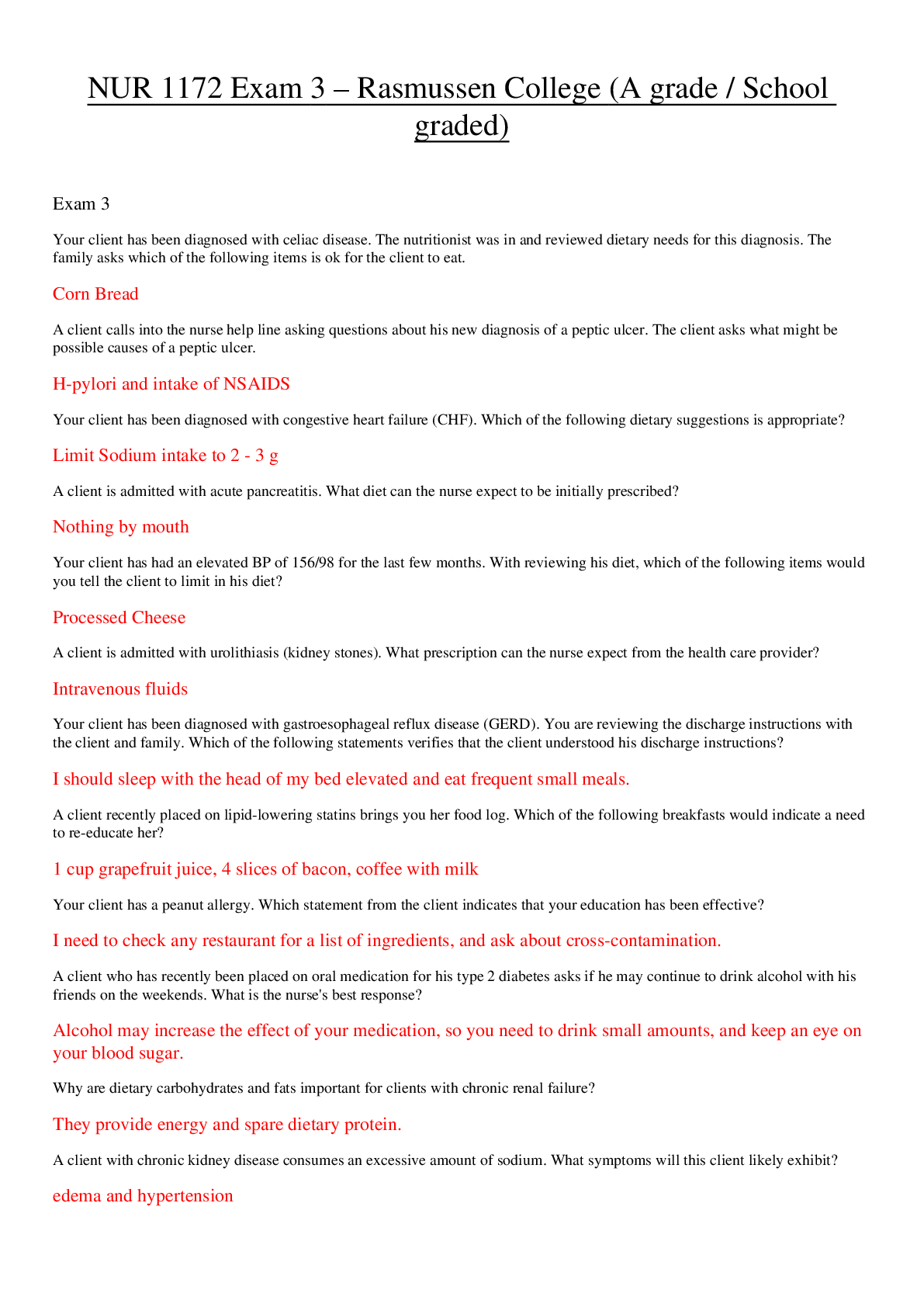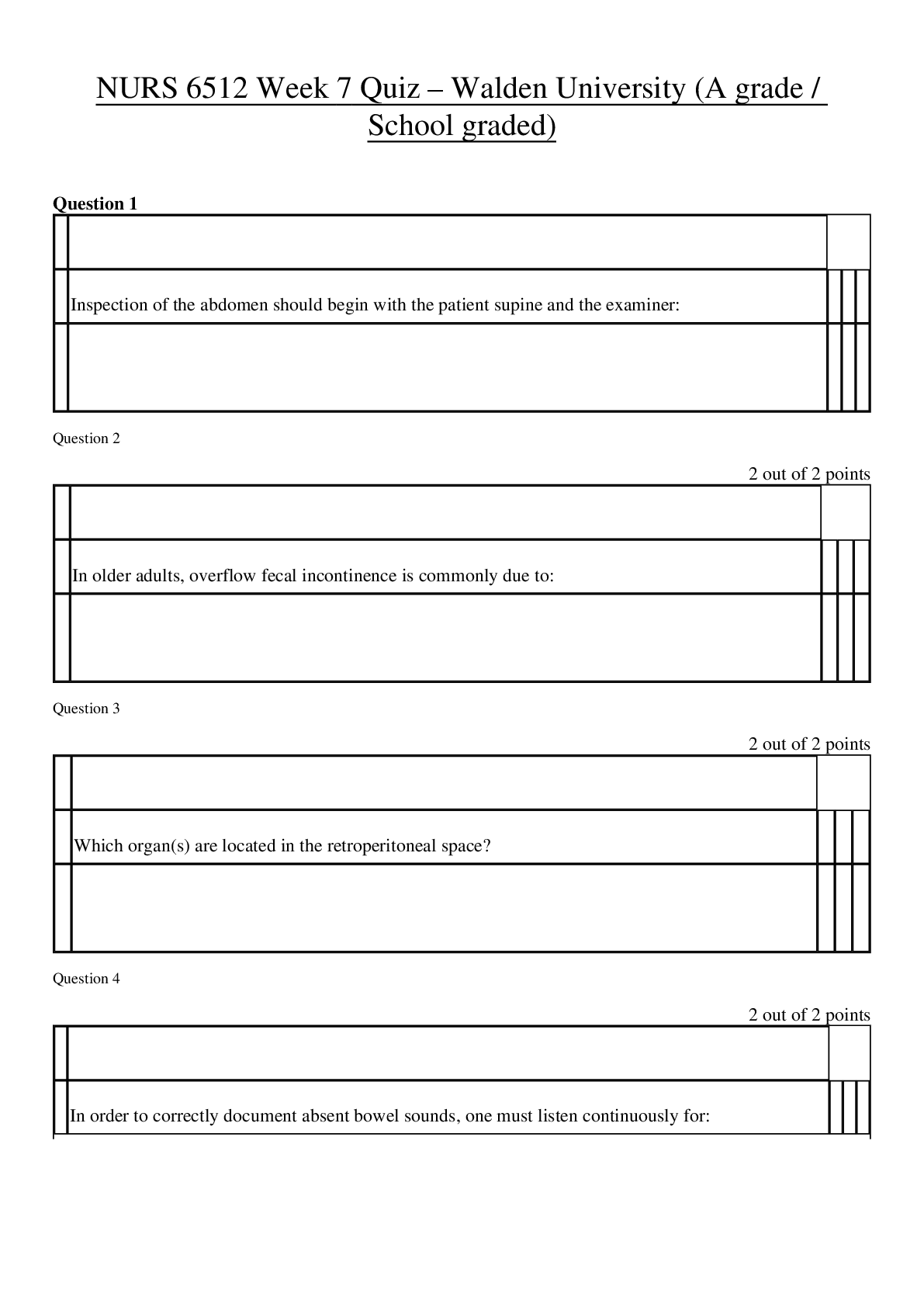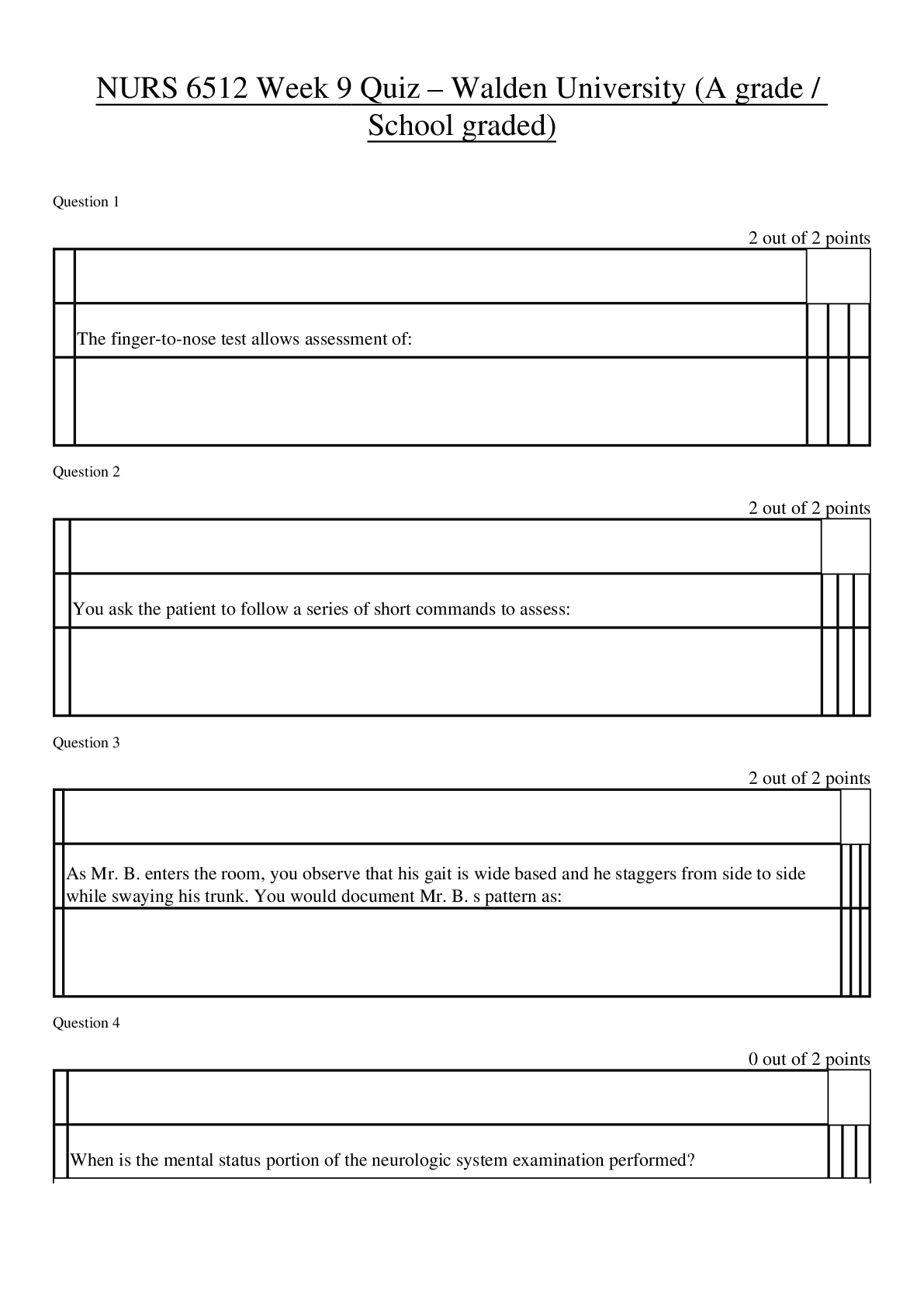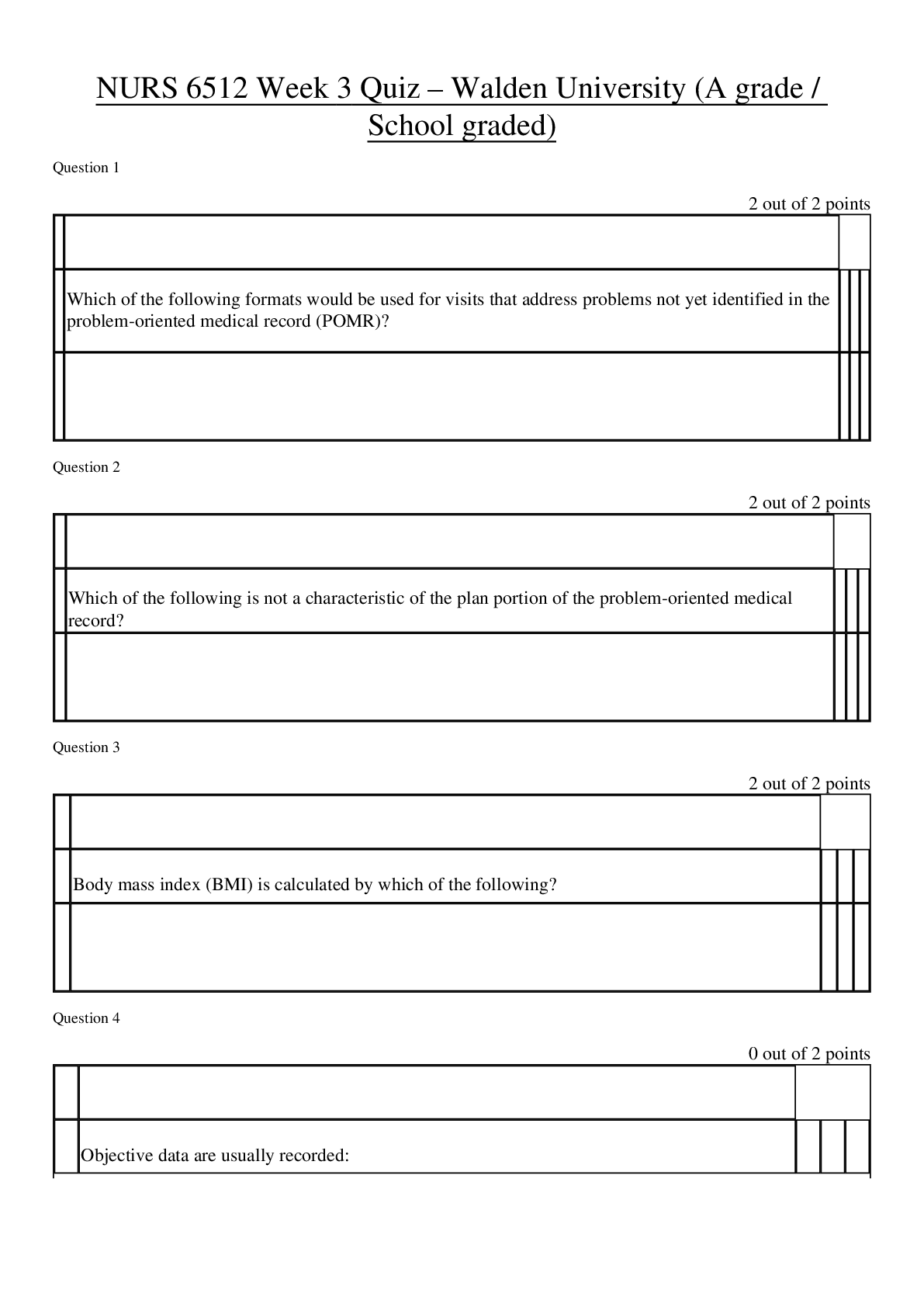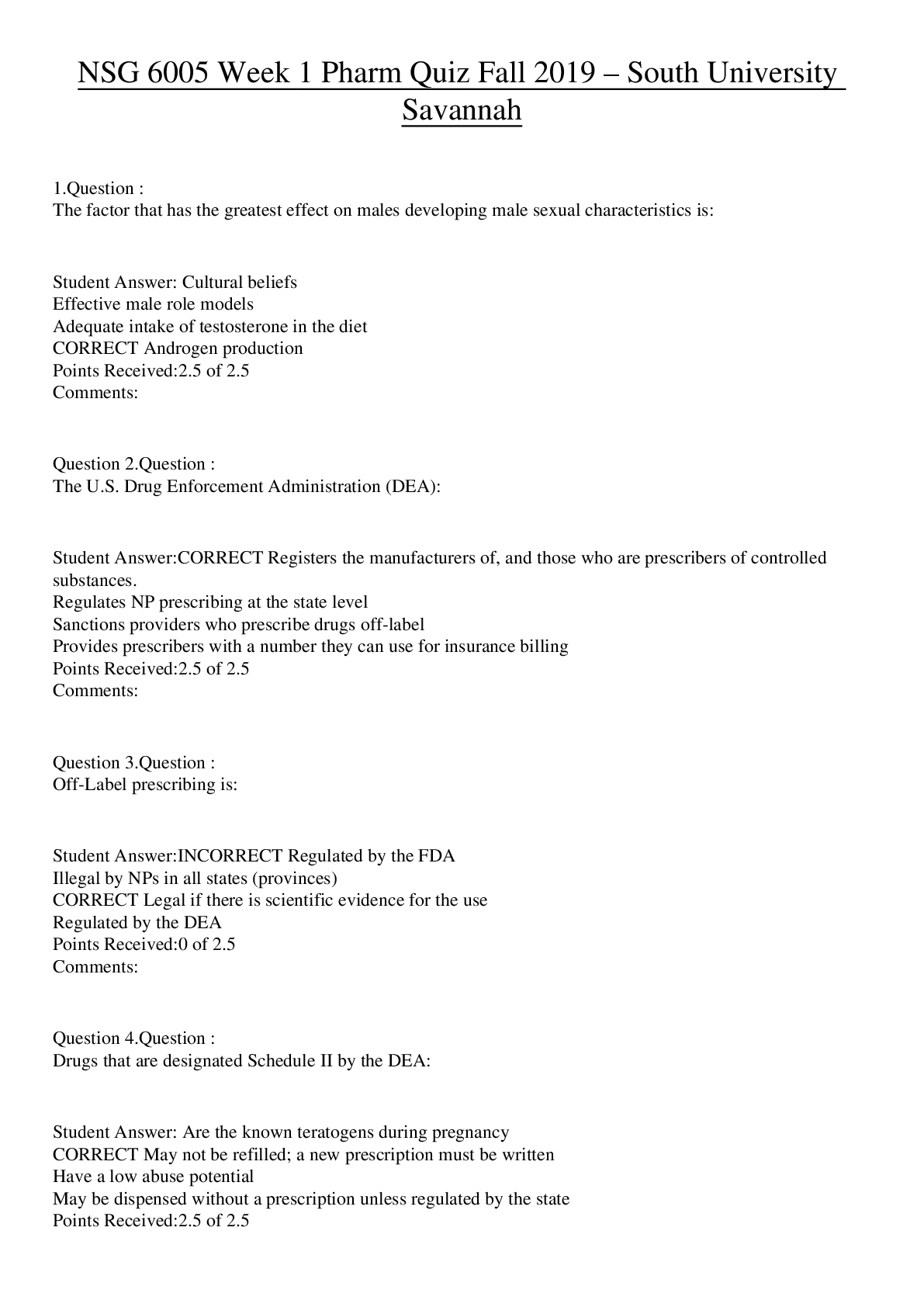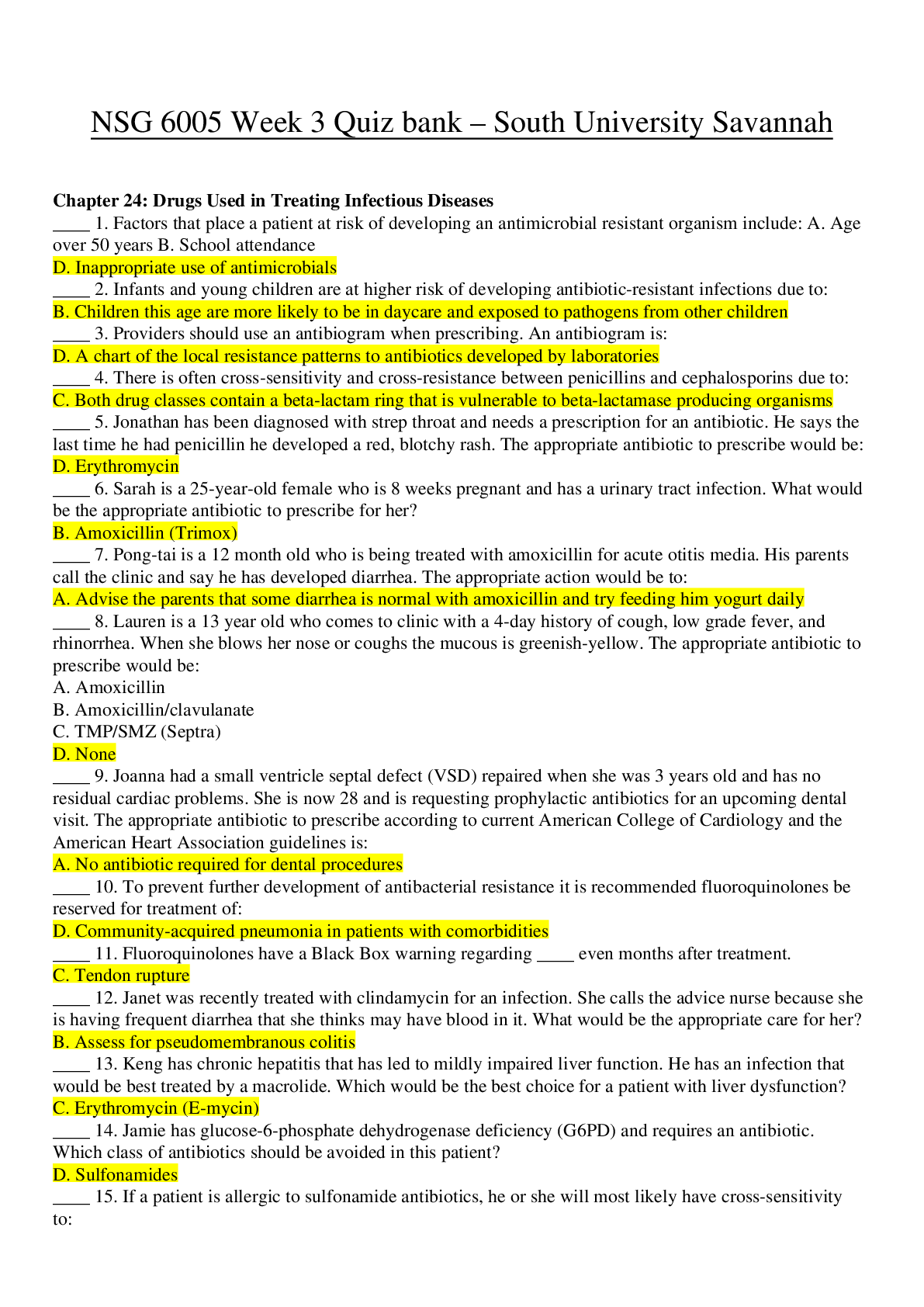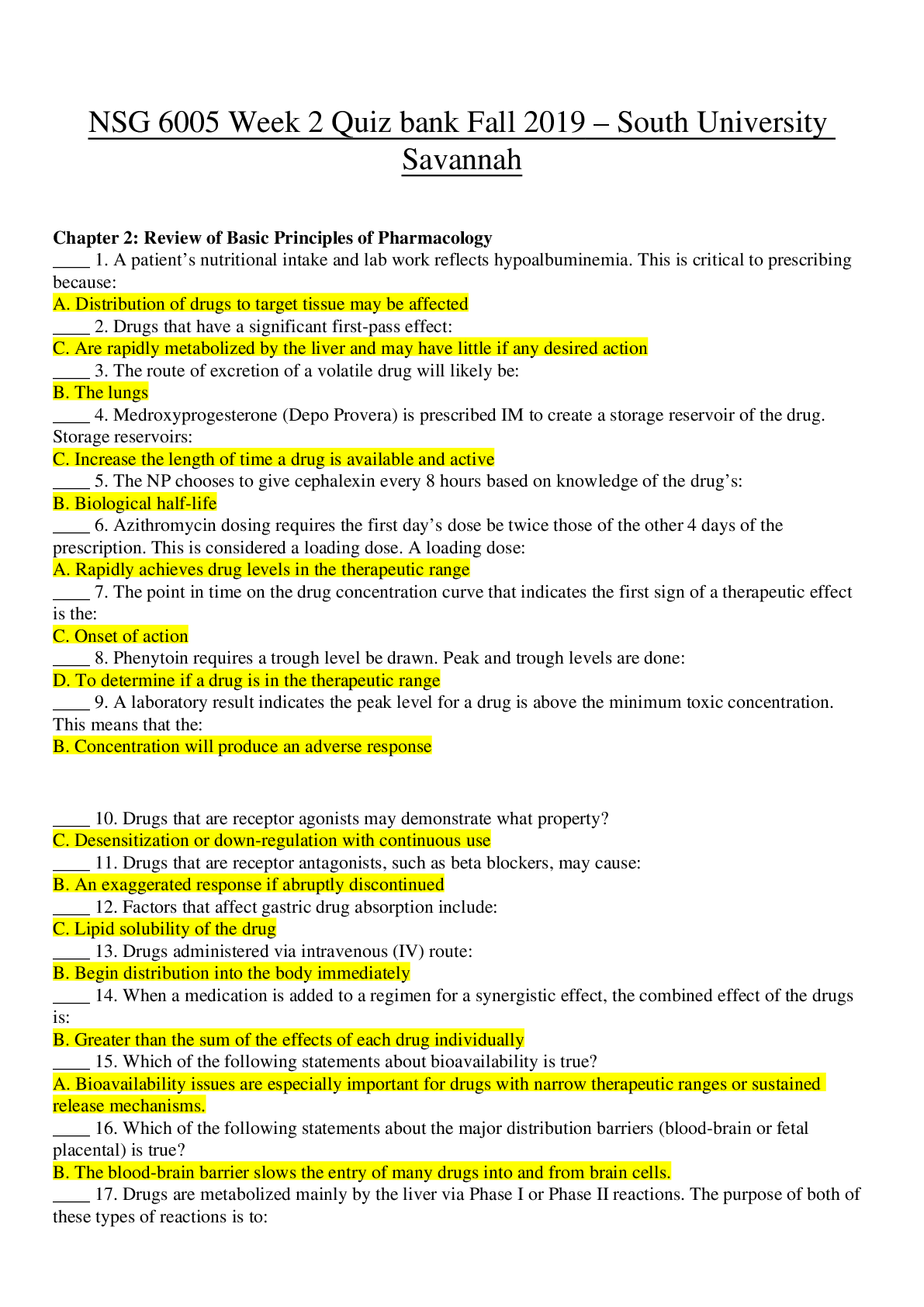*NURSING > EXAM > NSG 6005 Week 10 Quiz (Latest) - South University (A Grade / School graded) / NSG 6005 Week 10 Quiz (All)
NSG 6005 Week 10 Quiz (Latest) - South University (A Grade / School graded) / NSG 6005 Week 10 Quiz (Latest)
Document Content and Description Below
NSG 6005 Week 10 Quiz (Latest) - South University (A Grade / School graded) NSG6005 Week 10 Quiz (Latest): South University Question 1 Phase IV clinical trials in the United States are also... known as: A) Human bioavailability trials B) Postmarketing research C) Human safety and efficacy studies D) The last stage of animal trials before the human trials begin Question 2 Drugs that are designated Schedule II by the U.S. Drug Enforcement Administration: A) Are known teratogens during pregnancy B) May not be refilled; a new prescription must be written C) Have a low abuse potential D) May be dispensed without a prescription unless regulated by the state Question 3 Chemical dependency assessment is integral to the initial assessment of chronic pain. Which of the following raises a “red flag” about potential chemical dependency? A) Use of more than one drug to treat the pain B) Multiple times when prescriptions are lost with requests to refill C) Preferences for treatments that include alternative medicines D) Presence of a family member who has abused drugs Question 4 Age is a factor in different responses to pain. Which of the following age-related statements about pain is NOT true? A) Preterm and newborn infants do not yet have functional pain pathways. B) Painful experiences and prolonged exposure to analgesic drugs during pregnancy may permanently alter neuronal organization in the child. C) Increases in the pain threshold in older adults may be related to peripheral neuropathies and change in skin thickness. D) Decreases in pain tolerance are evident in older adults. Question 5 If interventions to resolve the cause of pain (e.g., rest, ice, compression, and elevation) are insufficient, pain medications are given based on the severity of pain. Drugs are given in which order of use? A) NSAIDs, opiates, corticosteroids B) Low-dose opiates, salicylates, increased dose of opiates C) Opiates, non-opiates, increased dose of non-opiate D) Non-opiate, increased dose of non-opiate, opiate [Show More]
Last updated: 1 year ago
Preview 1 out of 4 pages

Reviews( 0 )
Document information
Connected school, study & course
About the document
Uploaded On
May 29, 2020
Number of pages
4
Written in
Additional information
This document has been written for:
Uploaded
May 29, 2020
Downloads
0
Views
42














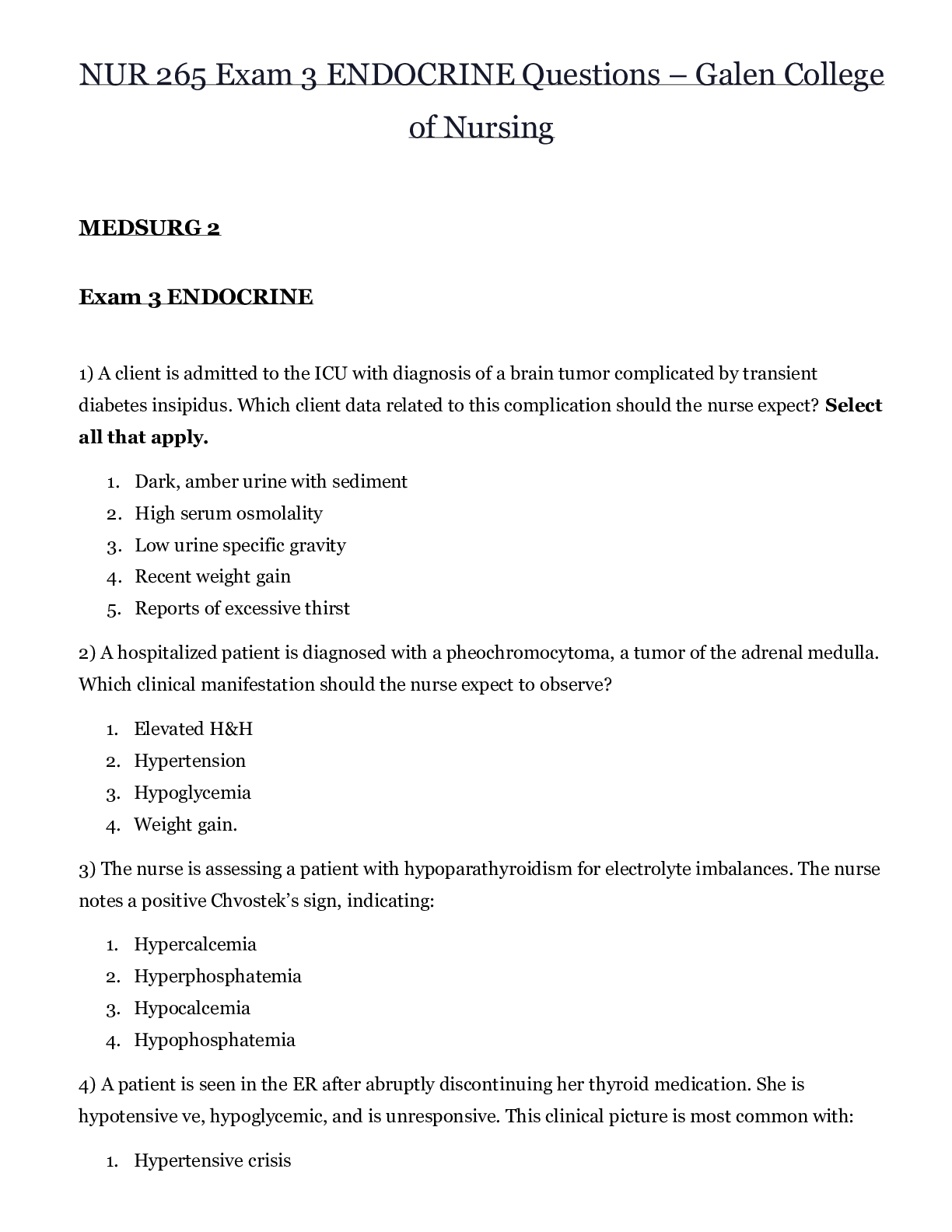
 – CHAMBERLAIN COLLEGE OF NURSING.png)
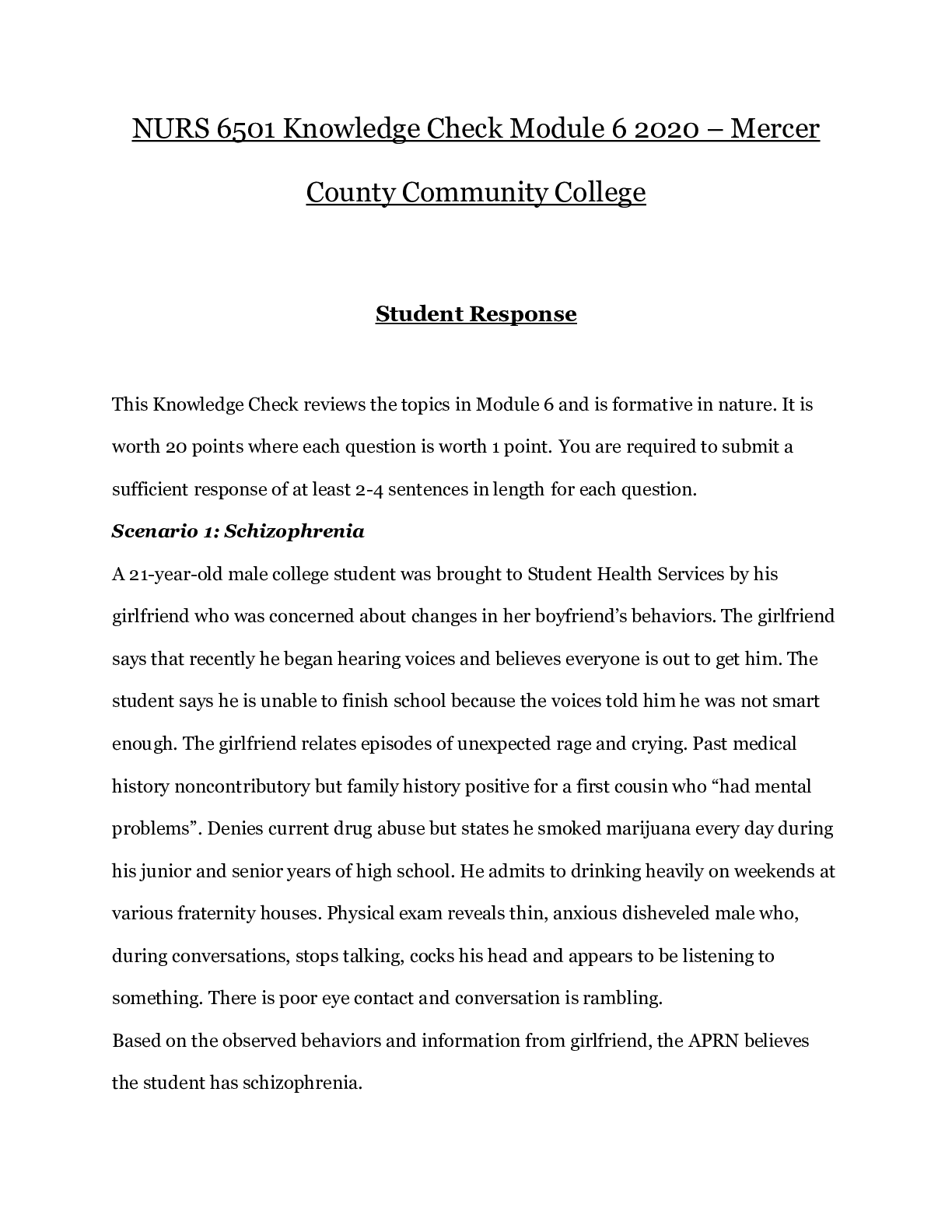
.png)

